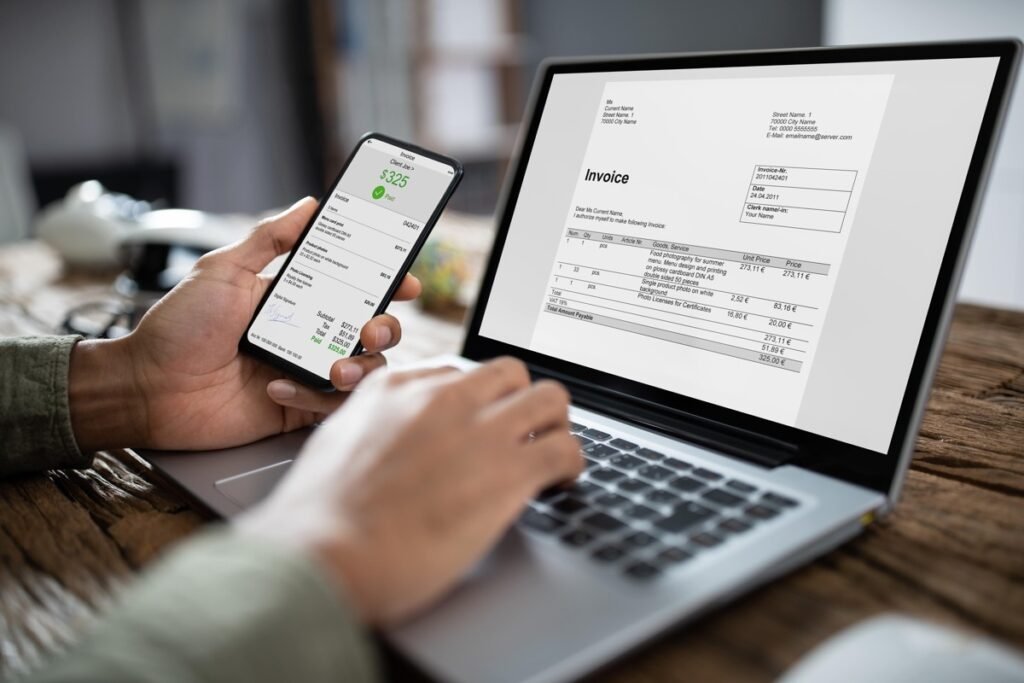<p>If you&#8217;re running a business, you know how important it is to keep track of your finances. One way to do this is by creating custom invoices for your customers. This can be a great way to stay organised and make sure that you&#8217;re getting paid for the work you&#8217;re doing. Here&#8217;s how to create custom invoices for your business:</p>



<h2 class="wp-block-heading"><strong>Introduction: why custom invoices are important</strong></h2>



<p>Custom invoices are an important part of running a business. They help you keep track of your finances and make sure that you are paid for the work that you do. A custom invoice also makes it easy to give your customers a detailed breakdown of what they owe and what services you provide.</p>



<h2 class="wp-block-heading"><strong>Step 1: Decide what info to include.</strong></h2>



<p>When creating custom invoices for your business, the first step is to decide what information to include. This will vary depending on your business type and the products or services you provide. However, a few key pieces of information should be included on every invoice.</p>



<p>First, include your business name and contact information. This should include your website, phone number, and email address. You may also want to include your logo if you have one.</p>



<p>Next, list the products or services you provided, along with a description of each. Be sure to include the quantity of each item and the price charged. If you offer discounts, be sure to mention that as well.</p>



<p>Finally, include any relevant terms and conditions. For example, if payment is due within 30 days, be sure to state that on the invoice.</p>



<h2 class="wp-block-heading"><strong>Step 2: Find a template or create your own</strong></h2>



<p>Invoicing your customers doesn&#8217;t have to be a daunting task. You can create professional and easy-to-understand custom invoices for your business by following a few simple steps. First, find a template online. Just type &#8220;business invoice templates&#8221; into your favourite search engine, and you&#8217;ll have hundreds to choose from. Or, create your own with <a href="https://invoice-maker.org/">www.invoice-maker.org</a></p>



<h2 class="wp-block-heading"><strong>Step 3: Fill in the details.</strong></h2>



<p>After you have the basic template of your invoice created, it is time to fill in the details. This includes adding your business information, the customer&#8217;s information, and the invoice items.</p>



<p>Adding your business information is simple. Include your business name, address, phone number, and email address. You may also want to add your logo to make the invoice more branded.</p>



<p>The customer&#8217;s information should include their name, address, and phone number. This helps you track who owes you money and where they live in case you need to contact them about the invoice.</p>



<p>Invoice items are what the customer is paying for. Include a description of the item, how many were purchased, and the price per unit. Be sure to add up the total cost of all items so that the customer knows how much they need to pay.</p>



<h2 class="wp-block-heading"><strong>Step 4: Save and send</strong></h2>



<p>After you’ve designed and entered your invoice information, the next step is to save and send it. Depending on how you want to distribute your invoices, there are a few different options for doing this.</p>



<p>If you want to email your invoices, you can do so directly from the program you used to create them. Simply select the “Email” option from the file menu, and enter the recipient’s address. Your invoice will be sent as an attachment.</p>



<p>You can also print and hand-deliver your invoices or mail them to your customers. To print, select the “Print” option from the file menu. You can choose which printer to use and how many copies to print.</p>



<h2 class="wp-block-heading"><strong>Conclusion:</strong></h2>



<p>As a business owner, keeping track of the money coming in and going out is important. Invoices are a crucial part of this process; custom invoices can help you stay organised and efficient. Creating custom invoices doesn&#8217;t have to be complicated or time-consuming. You can create invoices tailored to your business&#8217;s needs with a few simple steps.</p>



<p>When creating custom invoices, the most important thing is to include all the relevant information. Make sure to include the date, your business&#8217;s name and contact information, the client&#8217;s name and contact information, and a description of the services rendered. You should also include the agreed-upon price for those services. Once you have this information, you can start creating your invoice.</p>

How to Create Custom Invoices for Your Business

